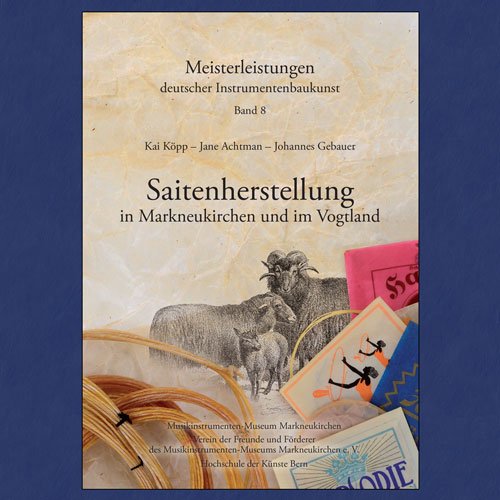I had heard of this book project on and off going back to at least 2013 and came upon the finished work recently:
Masterpieces of German Instrument Making, Vol. 8: String Production in Markneukirchen and in the Vogtland. Kai Köpp, Jane Achtman, Johannes Gebauer (editors). Markneukirchen/Bern, 2019.
This impressive tome references gut procurement (countries of origin, animal species, slaughtering, cleaning, preservation, transport), casing selection criteria, regional economic- and conflict-related industry upheavals, and pre-industrial manufacturing processes (cleaning, drying, polishing, quality classification), as well as an extensive history of music string making going back to the early 18th century in Markneukirchen, Germany, a string-making guild town for over 300 years.
The academic work was a collaboration between Bern University of Arts Institute of Interpretation and the Markneukirchner Musical Instrument Museum. The breadth and depth of information is quite impressive, and it has provided valuable confirmations of my understanding of the historical processes of a Saitenmachermeister, or Master String Maker, from that particular time in history.
One specifically interesting revelation was the detailed description of the then clearly well established process for splitting whole gut in the 1770s — a practice historically assumed to have been innovated 100 years later in the middle 19th century. The book is a remarkable trove of historic string making details, and it has been a great joy to read.

